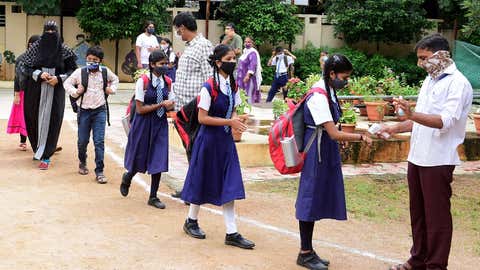

Representational image
(Venkat Apparao/TOI, BCCL, Hyderabad)
The initial days of the COVID-19 pandemic felt like a game of sleuth. Watching someone cough instantly activated the inner Sherlock within us, and we’d spend the entire day conspiring ways of deciphering whether they still retained the ability to smell and taste.
However, COVID-19 has evolved a ton since the initial strain that thrust the world into temporary limbo began circulating. And a mutating virus eventually results in a difference in the symptoms that characterise the disease.
As a result, while an inability to taste and smell might’ve served as a pretty concrete telltale sign that one contracted COVID in 2020, things might not look the same three years and countless mutations later. In fact, many experts lament that the new strains express symptoms in a way that has made it virtually indistinguishable from the flu, unless you actually test for it.
As mentioned earlier, at the start of the pandemic, the first commonly reported symptoms were majorly composed of an eerie loss of smell and taste. With COVID-19 being a respiratory illness, this was typically followed by a shortness of breath and a cough. Vascular injuries came next, explains expert David Strain to BMJ.
“People presenting with the earlier variants would have quite severe cardiorespiratory or mostly respiratory symptoms in the acute phase with other symptoms too, like brain fog.” elaborates Betty Raman of the University of Oxford. “Quite a significant proportion were admitted to hospital with the earlier variants.”
Fortunately, we’ve managed to invent and improve upon a wide variety of vaccines to fight against the original and subsequent variants of COVID. This included the original shot created within a year of the initial pandemic, along with booster doses that were later prescribed to update and augment our immunisation. As of December 19, 2023, over a billion Indians have been partially vaccinated against the virus. Nearly 952 million residents are fully vaccinated.
While prompt vaccination certainly helped reduce the incidence and severity of cases, the virus eventually began to adapt as well. Further, most people received their booster doses about two years ago, meaning the extra immunity has begun to wane in major sections of the population. Not to mention that many people may have contracted the disease multiple times, often unknowingly, since the initial pandemic.
All these factors will have altered the immunity systems of the individuals, and thus the disease will most likely express as a whole new set of symptoms in them.In fact, recent research showed that only 6-7% of people infected with Omicron-related sub-variants were likely to lose their sense of smell and touch compared to earlier!
David Strain explains that his patients were more likely to experience diarrhoea or a headache when they’re infected with the newer and emerging variants such as EG.5, or the soon-to-be dominant JN.1 creating a rapid uptick in cases worldwide. Early surges even manifested in gastrointestinal symptoms, he adds.
Most patients currently face upper respiratory symptoms upon infection, which might look surprisingly similar to a cold. These include mild symptoms such as congestion, sore throat, a runny nose and dry cough. Other common symptoms include a fever, body ache, headaches, shortness of breath, fatigue, nausea and diarrhoea.
Since the symptoms are so similar, experts have a particularly hard time distinguishing COVID from the flu. Some research has suggested that symptoms may manifest in a particular order: fever, then cough, followed by sore throat, muscle/head aches, and then finally vomiting or diarrhoea. The Centre of Disease Control (CDC) has also noted that COVID-19 takes longer to manifest from the time of infection than it takes the flu.
Because current test kits still work well to pick up on even the new strains, they can still be used if you’re feeling like it might be more than just the seasonal flu. A loss of taste and smell still prevail, albeit rarely. Pneumonia can also develop in patients that aren’t vaccinated or have underlying health issues.
Do get tested if symptoms manifest severely and persist beyond a couple of days. Pay more heed and exercise extra caution if you have co-morbidities and are over 60 years of age, or pregnant.
**
For weather, science, space, and COVID-19 updates on the go, download The Weather Channel App (on Android and iOS store). It’s free!




